How to Create an Engineering Culture That Will Drive Your Team’s Success
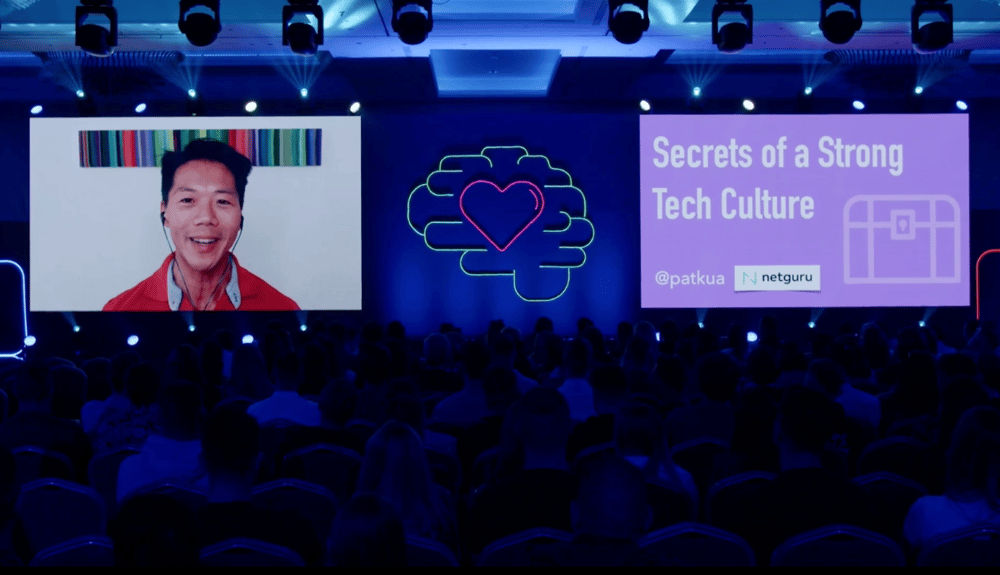
It’s a set of rituals, rules, and beliefs an engineering team follows that stands as a key factor behind the extraordinary accomplishments of top tech companies.
During the last Burning Minds conference powered by Netguru, keynote speaker Patrick Kua shared his top insights on what makes software development teams stand out. An ex-CTO and Chief Scientist at N26 Bank, Kua is an international expert on building tech leadership with 20 years of experience gathered in both startups and enterprises.
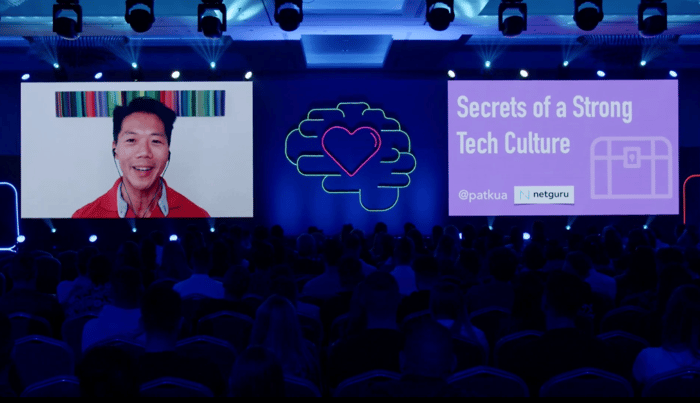
Understanding the “why” behind an engineering culture
There are a few significant reasons why both individual contributors and leaders in organizations should pay special attention to nurturing an environment that helps people grow and makes them feel supported and empowered:
- The engineering talent pool is limited. By 2030, the global talent shortage is expected to reach over 85 million vacancies, according to a report by global organizational consulting firm Korn Ferry. Of this figure, the tech labor-skills shortage will reach 4.3 million.
- Coming up with ideas is easy. The true challenge is knowing how to build sustainable and successful systems based on those ideas and make them impactful for end users.
- Currently, software is everywhere, and the need for advanced tech solutions is constantly growing. So is the need for talented people able to form healthy and productive teams as well as consistent workflows to produce better products.
“At the end of the day, it's the individual's choice. People choose the company they work with, and you'll have a stronger chance of retaining people if you invest in a strong engineering culture”
Three Big Secrets Unlocked
During his speech, Patrick Kua presented three approaches that could be a remedy to poor performance and lack of bonding between people working together.
What leaders of tech companies can do to embrace a more engaging and vigorous yet stable and effective work culture is to work on a sense of impact, freedom to make choices, and continuous improvement.
Secret #1: Impact
As Kua stated, there are three main ways engineers desire to make a true impact with their work. First, it’s about giving teammates a clear understanding of the effects of what they build on end users.
Second, seeing the outcome of the work engineers do is a critical factor that makes them more productive and reliable.
And last but not least, solving puzzles and challenges that can make a difference in somebody’s life is what brings developers true satisfaction and fulfilment.
However, although a sense of impact is one of the foundations of a healthy working environment, there are a few common traps tech organizations can fall into if they're not thinking about their culture deliberately. These include:
- No contact between engineers and clients due to proxies of different departments. It blurs the goals of a software team and removes them from real customer needs. Too many handoffs between people engaged in a process and switching contexts don’t help either.
- Slow feedback loops or a total lack of feedback. Because of that, tracking progress and understanding how improvements from the last release affect the general impact of a product is a lot harder.
- Forced multitasking and keeping people busy. This issue also breaks the connection between engineers' work and the impact it may have on the final solution.
- Seeing engineers simply as coders in a feature factory building whatever feature they are told to. If you exclude developers from the discovery session of customers’ issues and don’t let them design a solution along with the project team, you are at risk of releasing something of low business value.
- Being too focused on the solution itself from a technical perspective. Working on outputs, not outcomes, and delivering only to plans takes the whole process of creating software out of context while missing the core idea behind it.
The antidote to such drawbacks that allows you to build a healthier work environment and stronger engineering culture is to:
“Cultivate impact by reducing feedback loops”
He also mentioned some best practices worth implementing to make the above rule work.
Allowing engineers to shadow customer service may help them switch from a solution-centered to a customer-centered approach. Also, delivering in small increments into production is key for seeing the meaningful results of engineers’ work in real-time, which leads directly to accelerating release speed and frequency.
Moreover, from a management perspective, using OKRs for aligning the whole team fosters traceability of their progress and understanding of the impact they’re having in connection to some broader organizational goal.
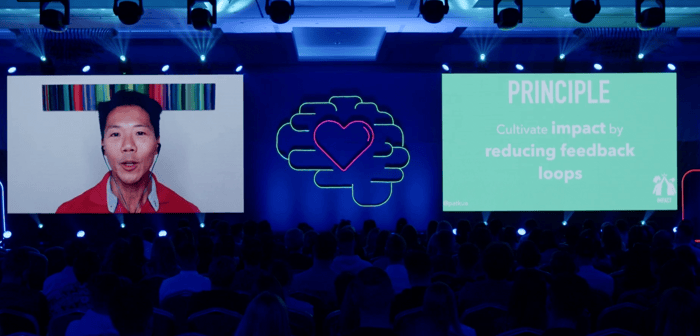
Secret #2: Freedom of choice
Giving the team the ability to make reasonable choices in how they operate might be another attribute of a strong engineering culture in your company. But how so?
“Part of this is having a say in how you are designing something,” says Kua. So it refers to the solution choice.
Another aspect of choice that may enhance the performance of the team and the engineers as individuals is the freedom for people to decide how they like to work with each other.
However, as the expert stated, “we don't have unlimited freedom,” and that’s a good thing. Law, company goals, and the hierarchy of roles within the team give us a certain degree of freedom and help to map the boundaries in which we act and keep our autonomy.
Of course, as in the previous secret (impact), there are some pitfalls that leaders responsible for shaping the team’s culture of work should be aware of.
What contradicts the freedom to choose a solution that fits the customer’s needs best are, among others, tech frameworks and mandated ways of working. Some companies may prefer or even impose certain technologies to match the client’s tech stack or remain in a technical comfort zone of its own, but having them “for the sake of the rule” is beyond reasoning.
The same is true of prescriptive methodologies of work and processes within the entity. “That doesn't mean just because one team is doing daily standups every morning at 9:00 am, every other team in the organization needs to do the same,” Kua states. That’s a serious constraint on being truly agile and achieving greater results as one team.
Another trap companies often fall into is ignoring technical peoples’ feedback in analyzing the needs, designing a solution, and planning the implementation, as well as letting them work only on pre-determined outputs. “A very common thing is to come up with some sort of assumptions, but without the right sort of guidance, from a technical perspective, a lot of those assumptions end up being wrong.”
Also, what’s worth taking into consideration while working on boosting the team’s performance is to avoid heavyweight rules on one hand and endless individual autonomy on the other. The unclear decision-making process that goes along with it creates chaos and unnecessary conflicts between team members.
What could be the solution to these bottlenecks on the way to becoming a truly agile organization, then?
Kua’s advice is: “Cultivate choice by making the right thing easy.” He proposes applying actions like:
- Automating the basics (i.e., avoiding manual code review or object-relational mapping and using architecture patterns for a certain type of code).
- Following principles over obeying the rules, since rules can be violated easily or exceptions might appear.
- Setting the objective and stepping out of the way to allow the team to decide on how to approach key results rather than giving them allocated tasks and outcomes.
- Defining the decision autonomy boundaries within and outside the team for a clearer and faster decision-making process. It’s a critical factor, especially if issues are discussed across departments or the whole firm.
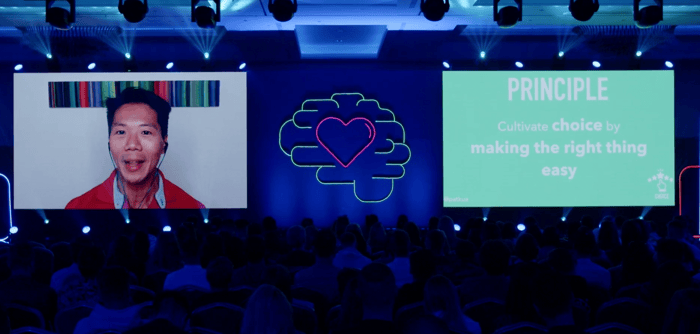
Secret #3: Continuous improvement
“There is no such thing as a perfect work environment,” says Kua deliberating on the third building block of strong engineering culture. Every company, whether it’s a startup or an enterprise, needs change-makers to drive the evolution of working environments from those underdeveloped to more mature ones.
Technical leaders are expected to figure out how the company can produce more innovative products or make hiring and retention more effective. So it won’t happen without constantly improving different areas of the business and giving people opportunities to grow.
According to Kua, it all starts with personal growth opportunities. Secondly, it’s a matter of making a significant impact on the company's mission, and lastly, it’s the question of whether people work on their environment and notice improvements that affect their productivity.
What are some common obstacles on the way to a greater engineering culture based on continuous improvement?
A company that doesn’t grow itself won’t assure enough growth opportunities for its employees. Whether it’s due to a lack of funds, new clients, projects, or new technologies to learn and implement into the current stack, people who don’t get the chance to thrive eventually leave. Limiting skilled professionals only to repetitive work like implementing replicable customer login systems and not giving them enough peer-to-peer support and feedback won’t make them stay either.
Another thing leaders cannot forget about is engaging team members in forming and improving their mission and purpose. To accomplish this, it’s critical to remain transparent about information in general but, most specifically, about the topmost company objectives and priorities. Otherwise, people won’t know how they are helping the company move forward.
Finally, having an improvement-friendly engineering culture should enable people to experiment. Often, what blocks this is a “won’t work here” attitude mostly seen in old-structured enterprises and making people dependent on endless procedures.
However, thanks to Kua’s observations, there’s a panacea to those problems worth considering:
“Cultivate improvement by making small changes easier.”
To make this idea work, technical leaders need to focus more on gathering and going through the lessons learned from inefficiencies. It may be taking action points from retrospectives or post-mortems, organizing knowledge-sharing forums like Burning Minds, or defining growth paths people can take to equip them with new challenges and protect them from burnout.
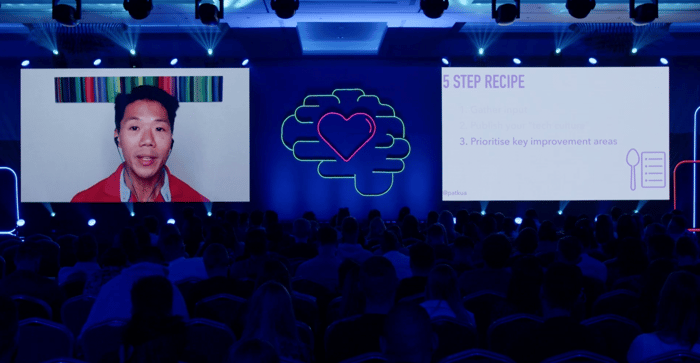
5-step recipe to vitalize your engineering culture
We’ve taken a closer look at some of the foundations of engineering culture. Now, it’s time to talk about what we, as leaders and tech experts, can do to upgrade our working environments.
Here are some key takeaways from Kua’s 5-step plan you might want to follow:
- Gather input. Observe what your culture looks like today. What are the good things and the bad things? Why do people work in your company and not another? Ask people what they like and dislike about the company, the team, the way of work, communication patterns, etc. Give them space to share ideas on how to fix it. It’s the base for further improvements.
- Publish your culture. Synthesize the input and share it in an explicit form. Make it real and available to everyone.
- Prioritize key improvement areas. There’s no way you can fix all the pain points at once, so focus on the most critical areas at first.
- Decide on the actions you need to take to improve the points prioritized. And follow up to see if anything has changed for the better.
- Repeat. “Engineering culture is never done these days,” says Kua. Iterating and continuously improving is key to creating a healthier, more appealing, and engaging workplace for all your teammates.
All in all, the leaders of winning tech companies (and particularly engineering teams) who care about their culture focus on creating an appropriate working environment where employees can grow, feel empowered and appreciated, and are free to act.
They know, and so should you, that by giving people a sense of impact on the shape of this culture, they can foster innovation and earn greater employee retention, client satisfaction, and overall business results. All the more because it seems tougher in the VUCA times in which we live, where software developers can change jobs effortlessly.
So if this is a starting point, make sure you follow all the above instructions and create an engineering culture that will drive your team’s success








